- Joined
- Oct 9, 2007
- Messages
- 47,598 (7.45/day)
- Location
- Dublin, Ireland
| System Name | RBMK-1000 |
|---|---|
| Processor | AMD Ryzen 7 5700G |
| Motherboard | Gigabyte B550 AORUS Elite V2 |
| Cooling | DeepCool Gammax L240 V2 |
| Memory | 2x 16GB DDR4-3200 |
| Video Card(s) | Galax RTX 4070 Ti EX |
| Storage | Samsung 990 1TB |
| Display(s) | BenQ 1440p 60 Hz 27-inch |
| Case | Corsair Carbide 100R |
| Audio Device(s) | ASUS SupremeFX S1220A |
| Power Supply | Cooler Master MWE Gold 650W |
| Mouse | ASUS ROG Strix Impact |
| Keyboard | Gamdias Hermes E2 |
| Software | Windows 11 Pro |
Gigabyte is allegedly into dubious marketing schemes once again. A disgruntled user in East Asia who picked up the company's GV-R567HM-1GI graphics card was shocked to find half the "advertised" memory available to him. The GV-R567HM-1GI is an ATI Radeon HD 5670 based graphics card that physically has only 512 MB of GDDR5 memory, yet advertises on its box and labels that the card provides 1 GB GDDR5 memory with ATI HyperMemory technology. The "HyperMemory" part is very inconspicuous and nowhere on the front box is the actual memory amount mentioned.
For the uninitiated, HyperMemory technology is an age-old technique used by ATI usually on its lowest-end SKUs, to increase the amount of memory available to the GPU, by sharing a fixed amount of memory from the system's main memory. NVIDIA has an identical technology called TurboCache. The allegation here is not entirely that of false marketing, but dubious marketing practices. For starters, the card is a GV-567D5-512I that is rebadged, next, the actual memory amount is not mentioned on the front of the box, making it difficult for unsuspecting buyers who don't know what HyperMemory is, to determine the actual memory, and third, there is pure false marketing involved in calling "512 MB GDDR5 + 512 MB system shared" as "1 GB GDDR5", there's no DDR5 PC memory standard. AMD's guidelines (refer pg. 14) are clear on the matter of dealing with HyperMemory branding. If you come across this card priced close to 1 GB models, you're definitely not signing up for a "1 GB GDDR5 card".
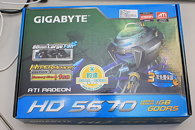
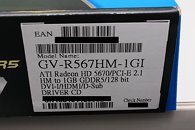
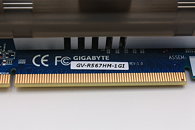
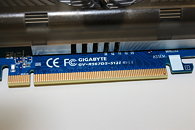
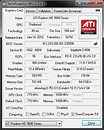
View at TechPowerUp Main Site
For the uninitiated, HyperMemory technology is an age-old technique used by ATI usually on its lowest-end SKUs, to increase the amount of memory available to the GPU, by sharing a fixed amount of memory from the system's main memory. NVIDIA has an identical technology called TurboCache. The allegation here is not entirely that of false marketing, but dubious marketing practices. For starters, the card is a GV-567D5-512I that is rebadged, next, the actual memory amount is not mentioned on the front of the box, making it difficult for unsuspecting buyers who don't know what HyperMemory is, to determine the actual memory, and third, there is pure false marketing involved in calling "512 MB GDDR5 + 512 MB system shared" as "1 GB GDDR5", there's no DDR5 PC memory standard. AMD's guidelines (refer pg. 14) are clear on the matter of dealing with HyperMemory branding. If you come across this card priced close to 1 GB models, you're definitely not signing up for a "1 GB GDDR5 card".





View at TechPowerUp Main Site
Last edited:



 :shadedshu
:shadedshu




